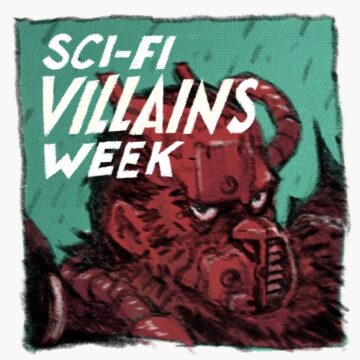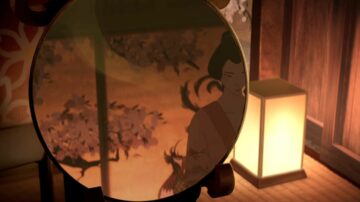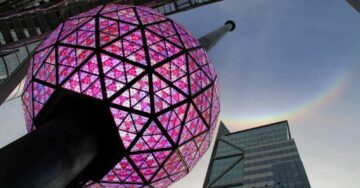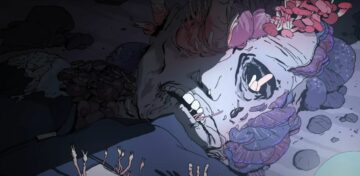Ask a science fiction fan to list their favorite characters, and it’s a safe bet that some of those faves won’t be human. The Doctor from Doctor Who; Spock from Star Trek; the Crystal Gems in Steven Universe; Valkyrie, Gamora, and Nebula from the Marvel Cinematic Universe … our most beloved characters often come from other worlds, even if they’re recognizably played by human actors.
Alien characters don’t just entertain us with their strange and unfamiliar ways — they also reflect our humanity back to us. Science fiction is all about exploring what it means to be human, and we can do that more easily by comparing ourselves against the alien characters we love or hate. This works a couple of different ways for writers:
- You can create alien characters who act human in many ways, except for a few major differences — and those differences can provide a contrast that reveals something about that human-seeming behavior.
- You can take one aspect of human behavior and exaggerate it until it becomes a defining characteristic, which lets viewers see its importance and its drawbacks more clearly.
Human-with-a-difference aliens can be an awesome thing — as anyone who’s ever been at a convention with a hundred people dressed as Klingons and Vulcans can attest. But there’s a drawback: the same thing that lets these alien characters reveal essential truths about human beings also risks turning them into reflections of our worst ideas about our fellow humans. Sometimes that almost-but-not-quite-human thing can reflect noxious stereotypes, or present one-dimensional images that we can then turn around and project onto real people.
Call it the Vulcan-Ferengi dichotomy. Both of these Star Trek peoples are based on a single attribute: “logical detachment” in the case of Vulcans, “avarice” in the case of Ferengi. But over the decades, Trek has given Vulcan culture a great deal of nuance and complexity, introducing noble Vulcans as well as Vulcan assholes. Meanwhile, Ferengi culture has remained pretty monolithic, and the fans have mostly come to admire Ferengi who’ve acted in an un-Ferengi-like fashion, or rejected Ferengi culture outright, like the wonderful Nog and Rom on Deep Space Nine.
One obvious difference: the Ferengi were originally created as villains, and only later became sympathetic characters, whereas the Vulcans started as heroes and eventually became something more ambiguous, especially in Enterprise. But it’s also a matter of nuance.
“The Naked Time”

A lot of the credit for the complexity of Vulcan society goes to Leonard Nimoy, who decided early on in the original 1960s Star Trek that his Vulcan character Spock wasn’t emotionless at all — he had tons of emotion, he was just repressing it, using techniques of mental discipline.
According to Nimoy’s memoir I Am Spock, the original script for the season 1 episode “The Naked Time” treated the Vulcan very differently than the version we see onscreen. In John D.F. Black’s original draft, after an inhibition-lowering virus spreads through the ship, a crewmember runs up to Spock and paints a mustache on his face. In response, Spock bursts into tears in front of everybody.
Nimoy felt this scene didn’t do Spock justice, so he convinced creator Gene Roddenberry to change it to the filmed version, which shows Spock hiding from everyone, alone, desperately trying to check his emotions by reminding himself of his Vulcan training. Spock loses this battle and weeps openly, telling Kirk that he regrets not telling his mother that he loves her. “That scene really showed our audience the internal conflict that drove the Vulcan,” Nimoy writes.
By the time the series visits Vulcan in “Amok Time” and introduces Surak, the founder of Vulcan society, in “The Savage Curtain,” Star Trek had already established the contradiction at the heart of Vulcan nature: They show no feelings because they feel too much. Over time, the franchise has revealed a number of Vulcan rituals and spiritual practices, and books like Spock’s World and Vulcan’s Glory have put more flesh on the Vulcan bones.
Likewise, the Klingons started out as one-dimensional villains — in the original Star Trek episode “Errand of Mercy,” they’re described purely as warlike and vicious, and they boast about their own ruthlessness. But over time, their portrayal started to emphasize their sense of honor and their family bonds, in episodes like “Day of the Dove.” By the time Worf first appears on The Next Generation, the Klingons are no longer the mindless sadists who tried to terrorize Organia back in 1967.
Meanwhile, everything revealed about Ferengi culture over the course of dozens of episodes just reinforces the notion that they’re motivated by greed, with a side order of misogyny. Most of the details we learn about the Ferengi involve things like the Rules of Acquisition, a set of guidelines for selfishness. The picture of traditional Ferengi culture grows more complex, but it’s always the same theme of finance and commerce above all else.
We’ve met a handful of sympathetic Ferengi since they were introduced in the first season of TNG. There’s Reyga, the scientist introduced in “Suspicions,” who helpfully says “a Ferengi scientist is almost a contradiction in terms.” (Even though you’d think greed and innovation would go hand in hand.)
And then there is Deep Space Nine’s Ferengi co-star Quark, whose family members seem to be admirable only to the extent that they outgrow Ferengi values, with his brother Rom becoming an engineer, and Rom’s son Nog joining Starfleet. By the end of Deep Space Nine, Rom’s mother Ishka has converted the Ferengi leader, Zek, to social democracy and feminism, creating a more equitable society with a social safety net — and Zek names the humble Rom as his successor. Even Quark, who clings stubbornly to Ferengi values, finds that he’s cheating people less than before, and laments, “I’ve been infected too … I’ve gone soft.” He adds, “This disease has to be stopped before it destroys everything Ferenginar stands for.”
In an earlier DS9 episode, “Prophet Motive,” the all-seeing Prophets reveal that the Ferengi were once a selfless, “less adversarial” people, but they evolved to become obsessed with acquisition — thus setting up that Ferengi culture has become warped, but the Ferengi are capable of change. But at no point do we see much reason to admire Ferengi culture, beyond the fact that their cunning can prove useful.
The simplicity of Vulcan logic was tempered by our awareness that it reflects hard-won discipline, but the equally stark Ferengi greed is never anything but a dead end this culture has traveled down.
Meet one Toydarian, you’ve met ’em all

The failure mode of alien species is the one-size-fits-all characterization. Too often, science fiction creators allow every member of their vast invented civilizations to share the exact same personality and values. For example, the Star Wars Expanded Universe introduces several Toydarians, members of the same species as the slimy slave-owner Watto from The Phantom Menace. And all of them seem to be crooks with, as Wookieepedia puts it, a “shrewd business sense.”
The most hilarious example of an alien monoculture comes from the 1974 Doctor Who episode “The Monster of Peladon,” in which a mining engineer named Nexos proclaims, “We people of the planet Vega are a practical race of mining engineers.” That’s right: every member of his species is a mining engineer. One shudders to imagine the career fairs at Vegan schools.
We Could Be Heroes author and Star Trek superfan Mike Chen says there’s nothing wrong, per se, with building an alien civilization around “somewhat monolithic core values.” In fact, Chen finds this preferable to aliens who “act like humans, but they have fish heads.” The trouble starts when you pick a single attribute that overlaps with a stereotype about a real-life culture here on Earth.
For example, the Ferengi and Toydarians are frequently compared to Jewish people, while both Klingons and Vulcans have been seen as having Asian attributes. The Phantom Menace overall is a cornucopia of unforgivable ethnic stereotypes, including Jar-Jar Binks and the Nemoidians.
So how do you create an alien civilization that feels distinct, without falling into these stereotypes? Chen says the key is to treat real-life human cultures with respect, and to do what Trek did with the Vulcans: keep adding layers until the characterization becomes both deeper and more of its own distinctive thing.
But it’s also really helpful when the human characters in a story represent a wide range of communities and experiences on Earth. The more we see positive and nuanced images of Earth cultures in a story, the less likely they are to stand side-by-side with alien caricatures of those same cultures.
It’s also really important to avoid that “monoculture” thing that poor old Nexos exemplifies. One attribute of a believable civilization is that its citizens will vary, with different ideas and traditions. When you think about the huge differences between, say, New Jersey and Connecticut, it seems bizarre to imagine a whole world where everybody shares the exact same values and customs. A good rule of thumb should be that no members of the same society should agree about absolutely everything.
Most of all, the best alien species are recognizably alien. Even if they share our basic humanoid shape, they should have a very different anatomy and biology, reflecting the fact that they evolved in another ecosystem. Aliens shouldn’t necessarily have the same ideas about food, religion, mating, families, hobbies, or sports as anyone on Earth. The more wild and off-kilter you can make an alien’s physiology and ideology, the less likely they are to seem overly simplistic — or to remind anyone of a marginalized group on Earth.
I’ve struggled with creating believable alien societies myself, and I’ve found that the only thing that worked was the same thing that helped make the Vulcans so iconic: including internal contradictions, and making sure that different members of a species have different personalities and attitudes. For my young-adult space-opera novel Victories Greater Than Death, I had a rule of thumb: no planet has a single government, a single culture, or a monolithic philosophy. When you’ve met one Makvarian, you’ve met one Makvarian. But I quickly found that each of my alien species still needed to have its own defining traits, or they’d all be bland and forgettable.
And that’s the thing: Making a memorable alien is a balancing act. You have to give them something audiences can pin on them so they stick out in everyone’s mind, but you don’t want to end up with a planet made up entirely of mining engineers. And you can’t spare an hour or a hundred pages to deliver a lecture on sanitation practices. At the same time, showing diversity among the members of an alien species — and also showcasing the diversity of humans alongside them — can help you to avoid some truly terrible outcomes.
You don’t have to choose between holding up a mirror to humanity and avoiding our very human tendency to rely on stereotypes and archetypes. If anything, a strange and bewildering set of aliens provide a greater contrast to humanity, and thus do more to help us see ourselves in a new light. Maybe if we can see aliens as complicated people who come from rich, varied societies, we can expand our ideas about each other as well, and come to understand our own complicated societies better in the process.
Charlie Jane Anders is the author of the science fiction novels All the Birds in the Sky and The City in the Middle of the Night. Her new young-adult space opera Victories Greater Than Death is now available from Tor Teen.
Source: https://www.polygon.com/22428749/star-trek-aliens-race-culture-star-wars
- "
- acquisition
- Adventure
- alien
- All
- Amazon
- among
- anatomy
- around
- audience
- Battle
- BEST
- biology
- Bonds
- Books
- Building
- business
- Career
- change
- City
- Commerce
- Communities
- conflict
- Connecticut
- Couple
- Creating
- creator
- credit
- Crooks
- Crystal
- Culture
- customs
- dead
- deal
- Democracy
- DID
- Disease
- Diversity
- Doctor
- Early
- ecosystem
- emotions
- engineer
- Engineers
- Expand
- Experiences
- Face
- Failure
- families
- family
- Fashion
- Fiction
- finance
- finds
- First
- food
- founder
- Franchise
- good
- Government
- great
- Group
- guidelines
- here
- hilarious
- Hobbies
- How
- HTTPS
- huge
- Humans
- Humor
- image
- Including
- Innovation
- IT
- Justice
- Key
- LEARN
- light
- List
- love
- major
- Making
- marvel
- Members
- menace
- Mining
- mirror
- mother
- names
- net
- New Jersey
- Notion
- Opera
- order
- Other
- People
- Personality
- phantom
- philosophy
- picture
- planet
- poor
- present
- project
- Publishing
- Race
- range
- Reflections
- religion
- response
- rules
- safe
- Safety
- Schools
- Science
- Science Fiction
- sense
- Series
- set
- setting
- Share
- Shares
- So
- Social
- Society
- son
- Space
- Sponsored
- Sports
- Star Trek
- Star Wars
- started
- teen
- theme
- time
- tons
- Tor
- Training
- treat
- us
- virus
- WHO
- WordPress
- works
- world










